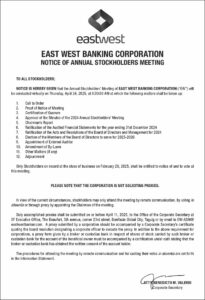By Adrian H. Halili, Reporter
THE DEPLOYMENT of the United States’ Navy-Marine Expeditionary Ship Interdiction System (NMESIS) in the Philippines could improve military modernization efforts but may also provoke a military response from China, analysts said at the weekend.
US Defense Secretary Peter Brian Hegseth, who was in Manila last week, said that US armed forces would deploy NMESIS missile systems during the annual Balikatan (shoulder-to-shoulder) joint military exercises in April.
“This is a big leap in the AFP’s (Armed Forces of the Philippines) modernization efforts through military aid with the US,” Chester B. Cabalza, founding president of Manila-based think tank International Development and Security Cooperation, said in a Facebook Messenger chat.
The US will also deploy an anti-ship missile system and highly capable unmanned surface vehicles, which Mr. Hegseth said that the weapon systems will allow US and Philippine forces “to train together using advanced capabilities to defend the Philippines’ sovereignty.”
Mr. Cabalza likewise expects the system to boost the country’s land warfare and naval warfare capabilities.
The US Defense chief visited the Philippines on March 28 and 29, reaffirming the US’ commitment to uphold its defense treaties in a meeting with Philippine President Ferdinand R. Marcos, Jr. and Defense Secretary Gilberto C. Teodoro, Jr.
The meeting also followed the start of the Salaknib joint military exercises that focus on territorial defense and commanding large-scale deployment of forces, which will run from March 24 to April 11.
About 5,000 soldiers from the Philippine Army and US Army Pacific will take part in warfighting and exchange of expertise in the first phase of this year’s Exercise Salaknib. A second phase is scheduled for later this year.
Rommel C. Banlaoi, president of the Philippine Society for International Security Studies, however, said that the deployment of the weapon systems will only deepen Manila’s reliance on the US defense.
“The deployment of NMESIS class missiles and Unmanned Surface Vessels to the Philippines can support US defense operations in Asia with the Philippines, as a military ally, joyriding on American defense. But it does not actually enhance the development of autonomous Philippine defense capabilities as those missiles remain under the control of the US,” Mr. Banloi said in a Viber message. According to Mr. Banlaoi the stationing of the missile system and unmanned naval vessels in the Philippines will only draw the ire of the Chinese government.
“The deployment would not deter but rather provoke China to harden its military activities in the South China Sea,” he added. “China has developed a counter-deterrence capability to deal with US military presence in the Philippines.”
Raphael J. Cortez, who teaches diplomacy at De La Salle-College of St. Benilde said the weapon’s deployment will be a catalyst for China to undertake more aggressive actions.
“With such deployment, we can expect that China’s strategies will be more robust and there’s a possibility that the counterpart of these missiles for them will also be deployed so as to deter both parties from actually utilizing it,” Mr. Cortez said via Facebook chat.
Manila and Beijing have repeatedly clashed in the South China Sea, with both sides accusing each other of raising tensions.
China claims more than 80% of the waterway. This was voided by a United Nations-backed tribunal based in The Hague in 2016 for being illegal.
The South China Sea is a vital waterway that sees more than $3 trillion worth of annual ship-borne commerce. Countries like Brunei, Indonesia, Malaysia and Vietnam also claim parts of the sea.
Amid the increasing tensions with Beijing in the South China Sea, the Philippines has been seeking more foreign defense deals with countries like the US, Australia, Japan, and Canada.
Last year, the US extended $500 million in aid for the modernization of the AFP and Philippine Coast Guard. The US government had also exempted security assistance to the Philippines worth $336 million from its foreign aid freeze.


















